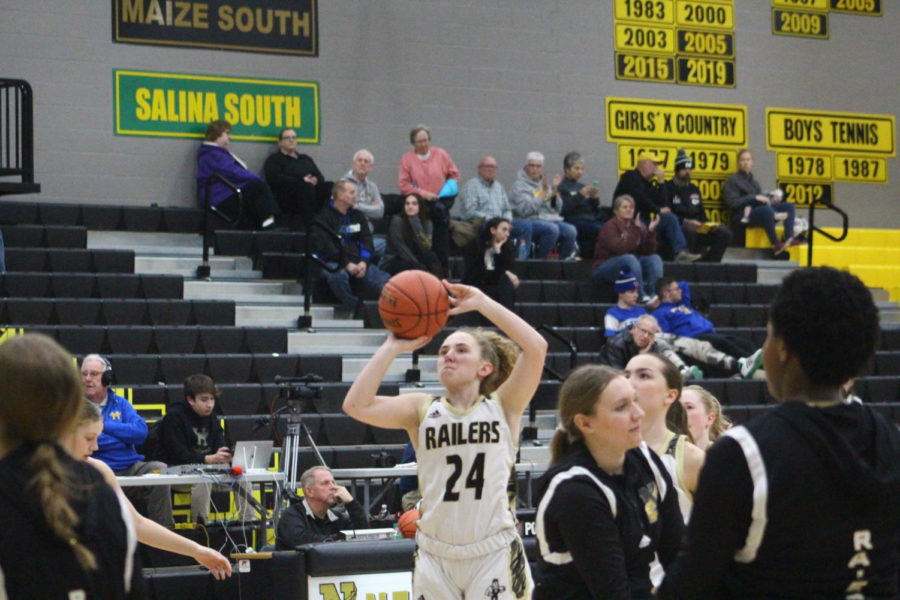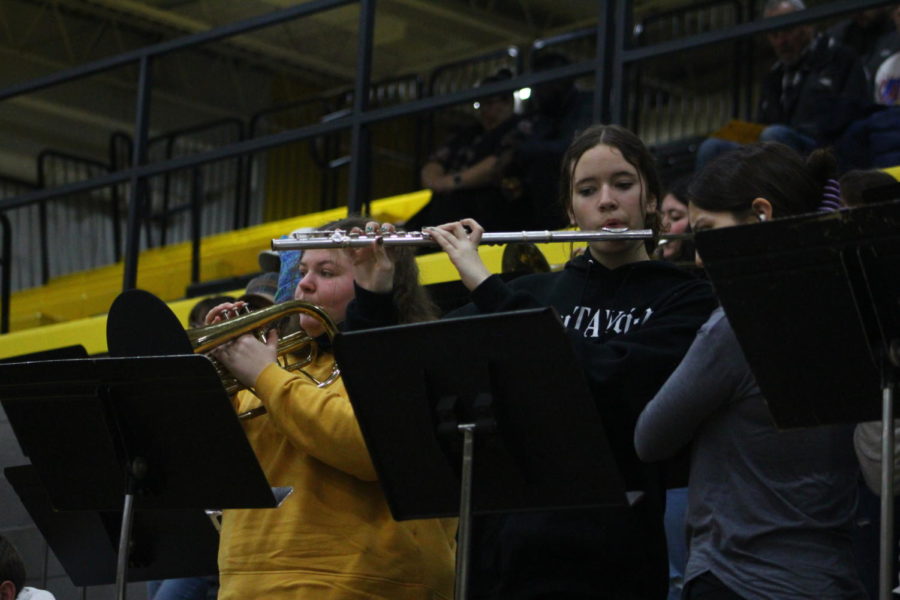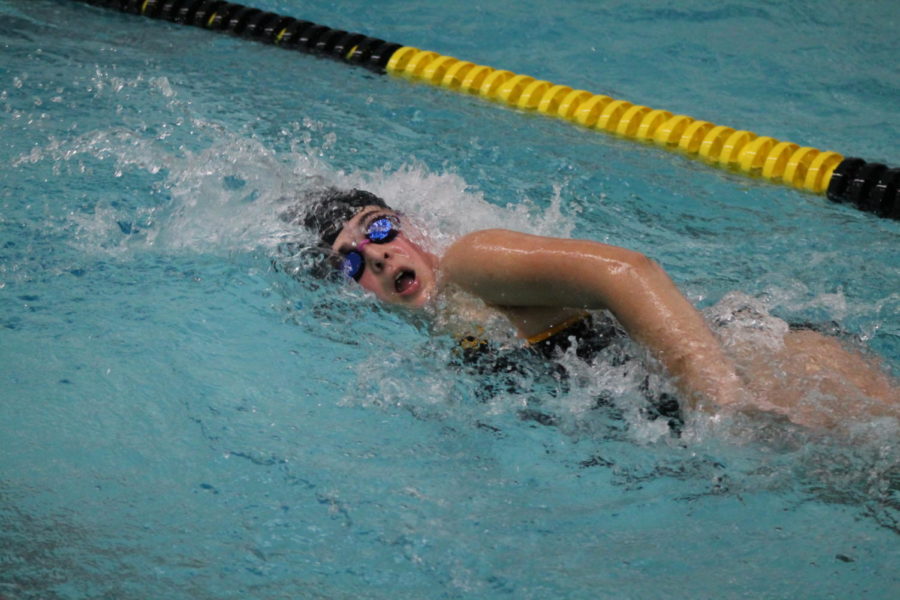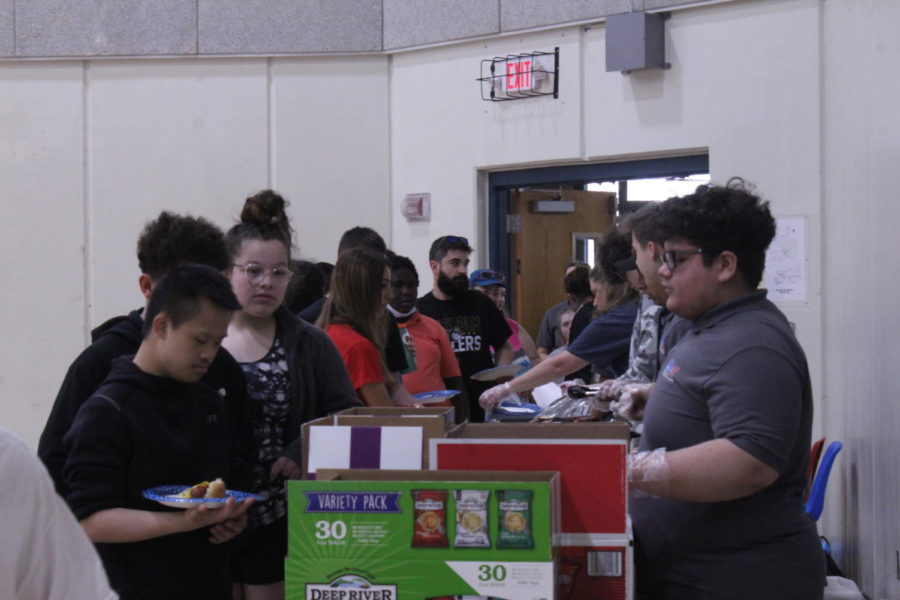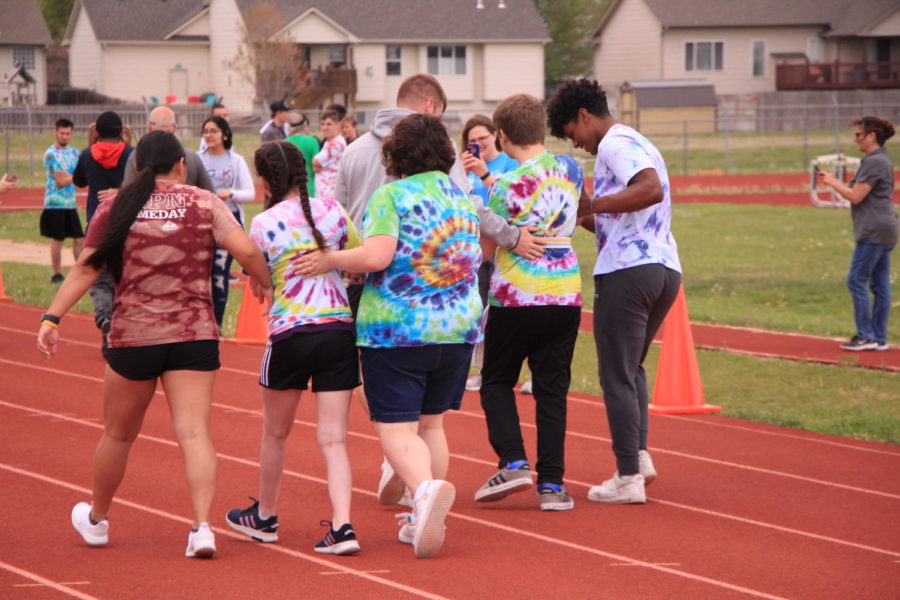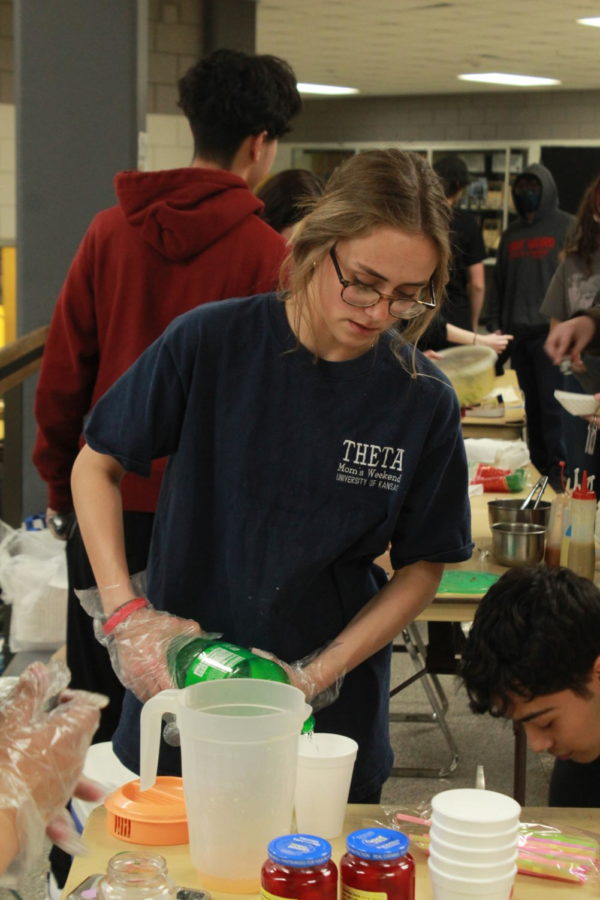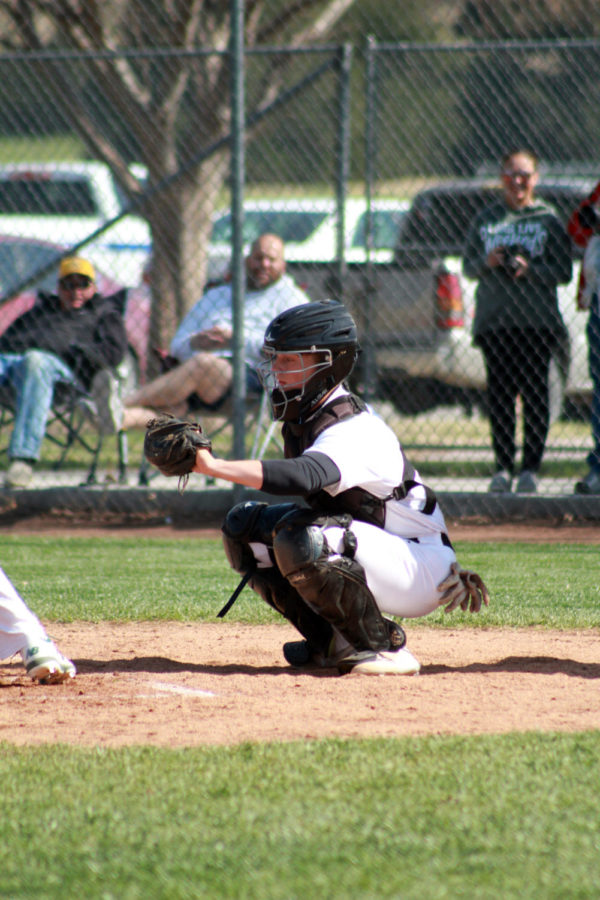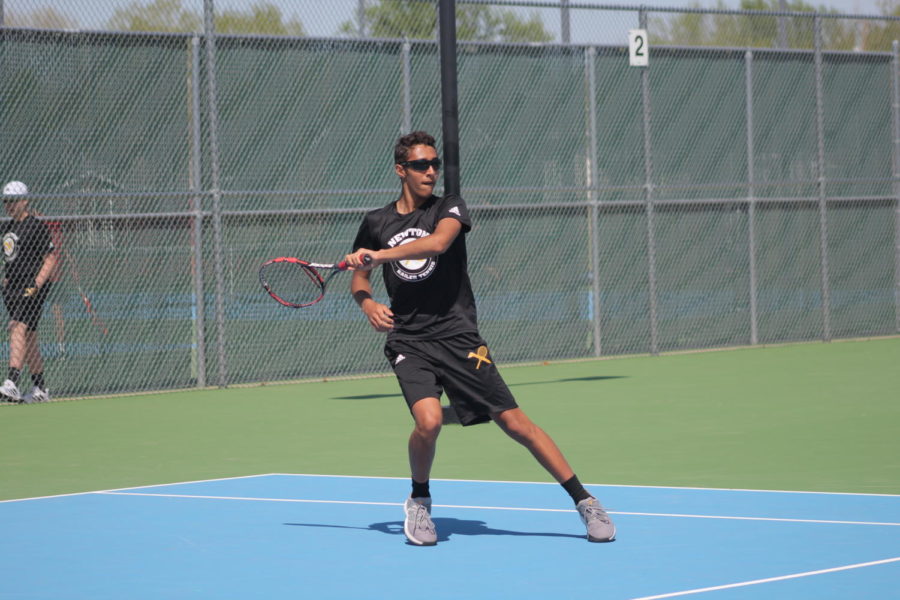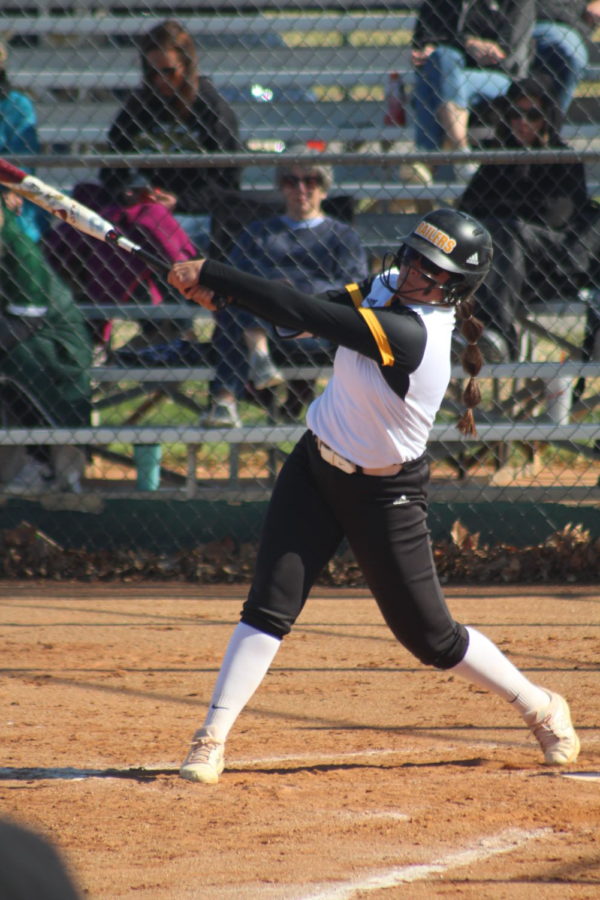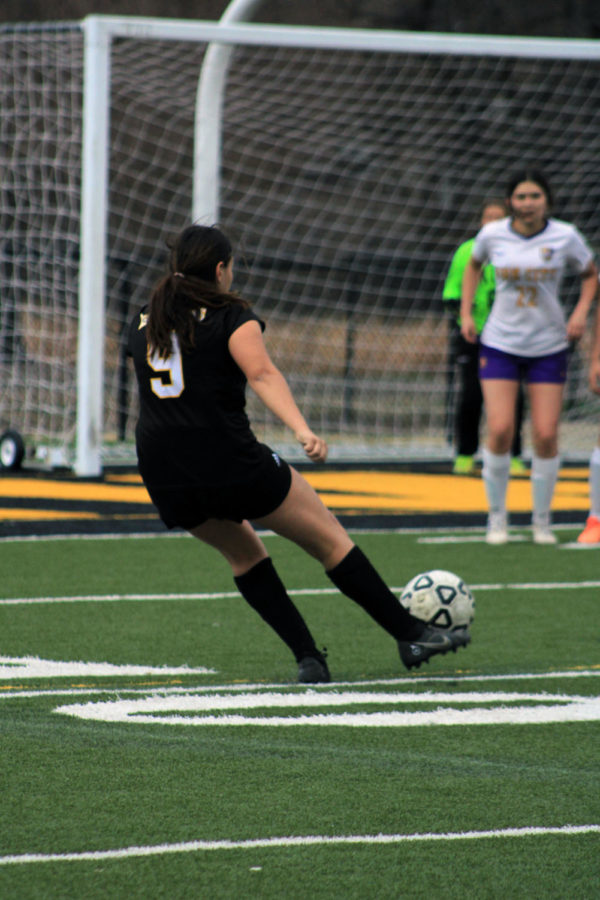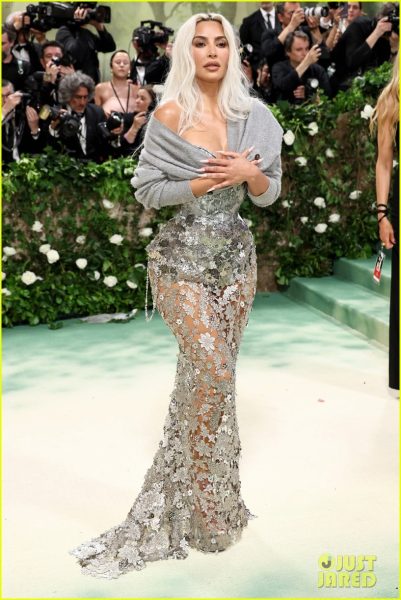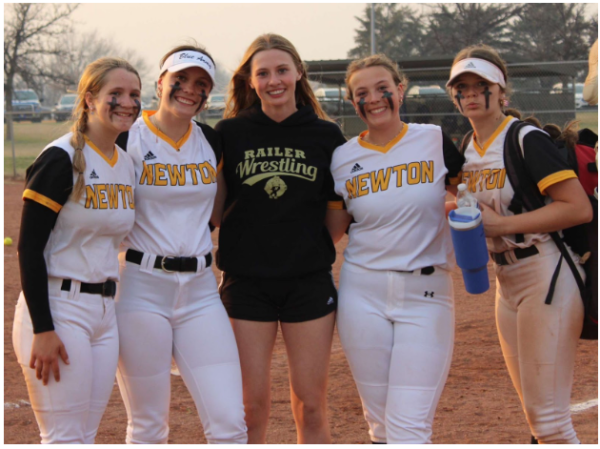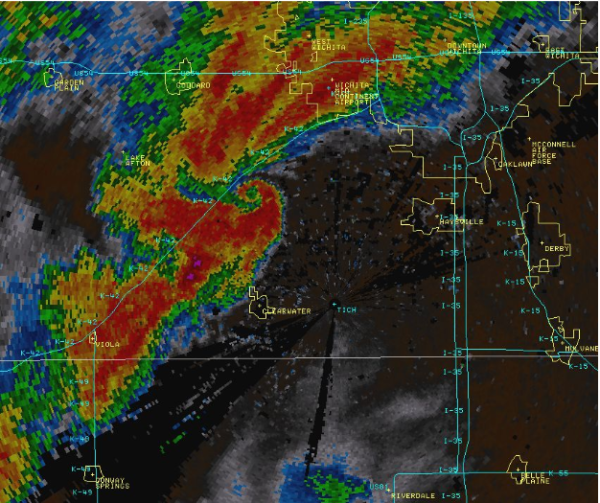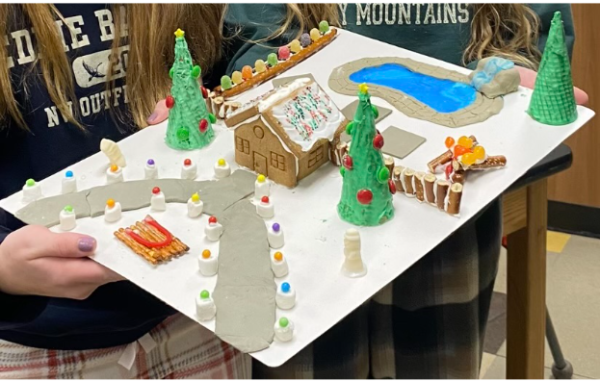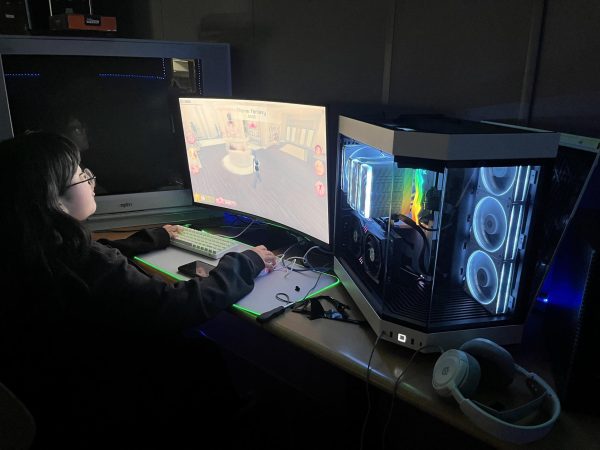Extreme heat affects fall sports practices
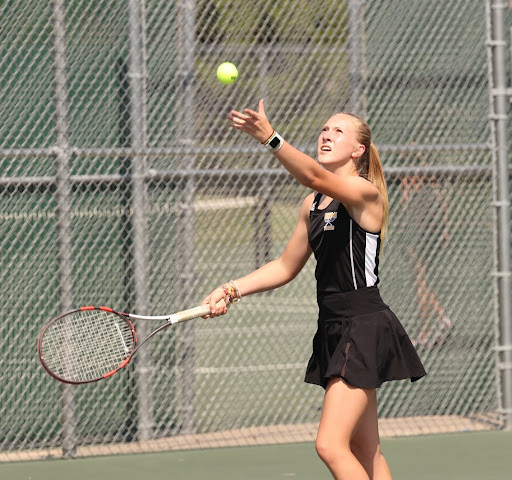
Senior Madelynn Hamm prepares to serve at the varsity home tournament on Sept. 7.
September 14, 2021
The start of school in mid August brought with it heat waves around the nation that have not ceased since. Extreme temperatures affect many people’s lives, but especially those involved in outdoor sports and activities.
NHS fall sports began practices the week of Aug. 16, when daytime temperatures were in the high 90s, even hitting 100℉ during the later part of the week. Though the heat of Kansas summer has often gone into September and even October, sophomore football player Nick Ruth thinks that starting sports practices in early September last year, instead of mid-August like this year, made the season feel less hot.
“I can not tell if it is just because it has been humid, but it feels hotter than years past. I would not say [practice] is any harder in the heat, but it is more physically demanding,” Ruth said. “You are out in the heat burning more calories and losing more water, so the game is not harder, but everyday life in season is.”
Besides football, the outdoor fall sports that NHS offers are tennis, cross country, boys’ soccer and girls’ golf. According to Active, tennis courts can be, on average, 15-20℉ hotter than the air temperature which means that tennis players have to work harder and do more to stay cool to expect a good match outcome. Senior tennis player Madelynn Hamm has had a successful start to her final season despite the heat, winning first place at the McPherson tournament.
“I am sure the heat has been just as bad in the past tennis seasons, but it still gets me every time the season starts. It takes a few days to really get acclimated to how hot it is out,” Hamm said. “Playing tennis in extreme heat makes it more difficult to play your best. Since you are running back and forth the whole match, it is easy to get overheated especially because matches can last anywhere from 45 minutes to a couple of hours and you play multiple matches at a meet. You are just out on the courts for so long.”
Both Hamm and Ruth agree that the ideal weather for outdoor sports is significantly cooler than the recent temperatures. Hamm said the perfect weather for tennis would be 70-80℉, and Ruth had a similar opinion in regards to the perfect weather for football.
“The dream weather for a football game is still and around 75 degrees. In other words, the opposite of what we had to start the season,” Ruth said. “I think all of the guys would agree that practice in 95 degree heat sucks. We all have a better mindset once the season cools down and it is easier on our bodies so we can push ourselves harder in the cool season.”
Hamm added that she can often feel the temperature difference between the courts and the air, which makes practice feel even hotter. In addition to the extreme heat, there are currently windblockers located on the tennis court fences, so there is little to no breeze to cool down the players.
“I think that the team as a whole performs worse on the hotter days, just because it is hard to keep a good mindset throughout a long match when it is super hot, plus the heat just drains all your energy,” Hamm said. “If it was between extreme heat and colder temperatures, I would rather have it be cold.”

